A Passive Channel Measurement and Analysis Based on a 5G Commercial Network in V2I Communications
Abstract
:1. Introduction
2. 5G Passive Channel Measurement Platform
2.1. Structure of Measurement Platform
2.2. Measurement Waveform
2.3. Measurement Algorithm
2.4. Platform Validation
3. Field Measurements
3.1. Measurement Scenarios and Setup
3.2. Channel Characteristics Analysis
3.2.1. Power Delay Profile Analysis
3.2.2. Analysis of the Number of Multipaths
3.2.3. Delay Spread Analysis
3.2.4. Ricean K-Factor Analysis
4. Conclusions
Author Contributions
Funding
Data Availability Statement
Conflicts of Interest
References
- Garcia, M.H.C.; Molina-Galan, A.; Boban, M.; Gozalvez, J.; Coll-Perales, B.; Sahin, T.; Kousaridas, A. A Tutorial on 5G NR V2X Communications. IEEE Commun. Surv. Tutor. 2021, 23, 1972–2026. [Google Scholar] [CrossRef]
- Chatzoulis, D.; Chaikalis, C.; Kosmanos, D.; Anagnostou, K.E.; Xenakis, A. 3GPP 5G V2X Error Correction Coding for Various Propagation Environments: A QoS Approach. Electronics 2023, 12, 2898. [Google Scholar] [CrossRef]
- Miao, H.; Zhang, J.; Tang, P.; Tian, L.; Zhao, X.; Guo, B.; Liu, G. Sub-6 GHz to mmWave for 5G-Advanced and Beyond: Channel Measurements, Characteristics and Impact on System Performance. IEEE J. Sel. Areas Commun. 2023, 41, 1945–1960. [Google Scholar] [CrossRef]
- Li, W.; Hu, X.; Gao, J.; Zhao, L.; Jiang, T. Measurements and Analysis of Propagation Channels in Vehicle-to-Infrastructure Scenarios. IEEE Trans. Veh. Technol. 2020, 69, 3550–3561. [Google Scholar] [CrossRef]
- Eckhardt, J.M.; Petrov, V.; Moltchanov, D.; Koucheryavy, Y.; Kürner, T. Channel Measurements and Modeling for Low-Terahertz Band Vehicular Communications. IEEE J. Sel. Areas Commun. 2021, 39, 1590–1603. [Google Scholar] [CrossRef]
- Petrov, V.; Eckhardt, J.M.; Moltchanov, D.; Koucheryavy, Y.; Kürner, T. Measurements of Reflection and Penetration Losses in Low Terahertz Band Vehicular Communications. In Proceedings of the 14th European Conference on Antennas and Propagation (EuCAP), Copenhagen, Denmark, 15–20 March 2020. [Google Scholar]
- Li, Y.; Chen, Y.; Yan, D.; Guan, K.; Han, C. Channel Characterization and Ray-Tracing Assisted Stochastic Modeling for Urban Vehicle-to-Infrastructure Terahertz Communications. IEEE Trans. Veh. Technol. 2023, 72, 2748–2763. [Google Scholar] [CrossRef]
- Yi, H.; Guan, K.; He, D.; Ai, B.; Dou, J.; Kim, J. Characterization for the Vehicle-to-Infrastructure Channel in Urban and Highway Scenarios at the Terahertz Band. IEEE Access 2019, 7, 166984–166996. [Google Scholar] [CrossRef]
- Yang, M.; Ai, B.; He, R.; Chen, L.; Li, X.; Li, J.; Zhang, B.; Huang, C.; Zhong, Z. A Cluster-Based Three-Dimensional Channel Model for Vehicle-to-Vehicle Communications. IEEE Trans. Veh. Technol. 2019, 68, 5208–5220. [Google Scholar] [CrossRef]
- Yang, M.; Ai, B.; He, R.; Chen, L.; Li, X.; Huang, C.; Ma, Z.; Zhong, Z.; Wang, J.; Li, Y.; et al. Measurements and Cluster-Based Modeling of Vehicle-to-Vehicle Channels With Large Vehicle Obstructions. IEEE Trans. Wirel. Commun. 2020, 19, 5860–5874. [Google Scholar] [CrossRef]
- Yang, M.; Ai, B.; He, R.; Ma, Z.; Mi, H.; Fei, D.; Zhong, Z.; Li, Y.; Li, J. Dynamic V2V Channel Measurement and Modeling at Street Intersection Scenarios. IEEE Trans. Antennas Propag. 2023, 71, 4417–4432. [Google Scholar] [CrossRef]
- Rashdan, I.; Müller, F.D.P.; Jost, T.; Sand, S.; Caire, G. Large-Scale Fading Characteristics and Models for Vehicle-to-Pedestrian Channel at 5-GHz. IEEE Access 2019, 7, 107648–107658. [Google Scholar] [CrossRef]
- Choi, J.; Ahn, S. A 5.9 GHz Channel Characterization at Railroad Crossings for Train-to-Infrastructure (T2I) Communications. Electronics 2023, 12, 2400. [Google Scholar] [CrossRef]
- Fei, D.; Chen, C.; Zheng, P.; Zhang, D.; Yang, J.; Chen, H.; Ai, B. A Novel Millimeter-Wave Channel Measurement Platform for 6G Intelligent Railway Scenarios. China Commun. 2022, 19, 60–73. [Google Scholar] [CrossRef]
- He, D.; Ai, B.; Briso-Rodríguez, C.; Zhong, Z. Train-to-Infrastructure Channel Modeling and Simulation in MmWave Band. IEEE Commun. Mag. 2019, 57, 44–49. [Google Scholar] [CrossRef]
- Sloane, W.; Gentile, C.; Shafi, M.; Senic, J.; Martin, P.A.; Woodward, G.K. Measurement-Based Analysis of Millimeter-Wave Channel Sparsity. IEEE Antennas Wirel. Propag. Lett. 2023, 22, 784–788. [Google Scholar] [CrossRef]
- Cai, X.; Yin, X.; Cheng, X.; Yuste, A.P. An Empirical Random-Cluster Model for Subway Channels Based on Passive Measurements in UMTS. IEEE Trans. Commun. 2016, 64, 3563–3575. [Google Scholar] [CrossRef]
- Zhou, T.; Tao, C.; Salous, S.; Liu, L.; Tan, Z. Channel Sounding for High-Speed Railway Communication Systems. IEEE Commun. Mag. 2015, 53, 70–77. [Google Scholar] [CrossRef]
- Zhou, T.; Tao, C.; Salous, S.; Liu, L. Measurements and Analysis of Short-Term Fading Behavior in High-Speed Railway Communication Networks. IEEE Trans. Veh. Technol. 2019, 68, 101–112. [Google Scholar] [CrossRef]
- Wu, T.; Yin, X.; Zhang, L.; Ning, J. Measurement-Based Channel Characterization for 5G Downlink Based on Passive Sounding in Sub-6 GHz 5G Commercial Networks. IEEE Trans. Wirel. Commun. 2021, 20, 3225–3239. [Google Scholar] [CrossRef]
- Sorecău, M.; Sorecău, E.; Sârbu, A.; Bechet, P. Real-Time Statistical Measurement of Wideband Signals Based on Software Defined Radio Technology. Electronics 2023, 12, 2920. [Google Scholar] [CrossRef]
- Standard 3GPP TS 38.214 (V17.1.0); NR; Physical Layer Procedures for Data. 3GPP Std.: Valbonne, France, 2022.
- Standard 3GPP TS 38.211 (V17.1.0); NR; Physical Channels and Modulation. 3GPP Std.: Valbonne, France, 2022.
- Yu, J.; Chen, W.; Li, F.; Li, C.; Yang, K.; Liu, Y.; Chang, F. Channel Measurement and Modeling of the Small-Scale Fading Characteristics for Urban Inland River Environment. IEEE Trans. Wirel. Commun. 2020, 19, 3376–3389. [Google Scholar] [CrossRef]
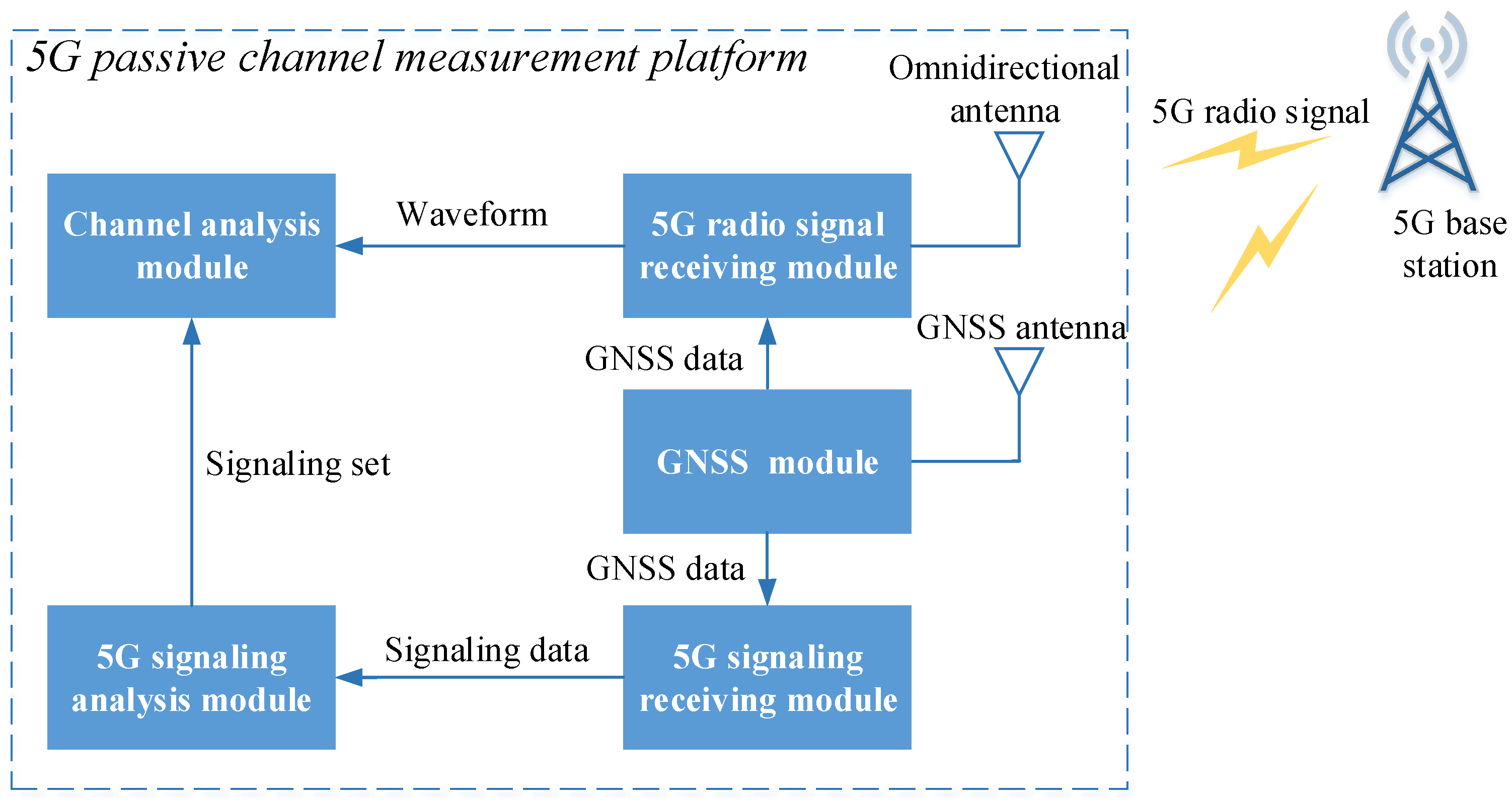





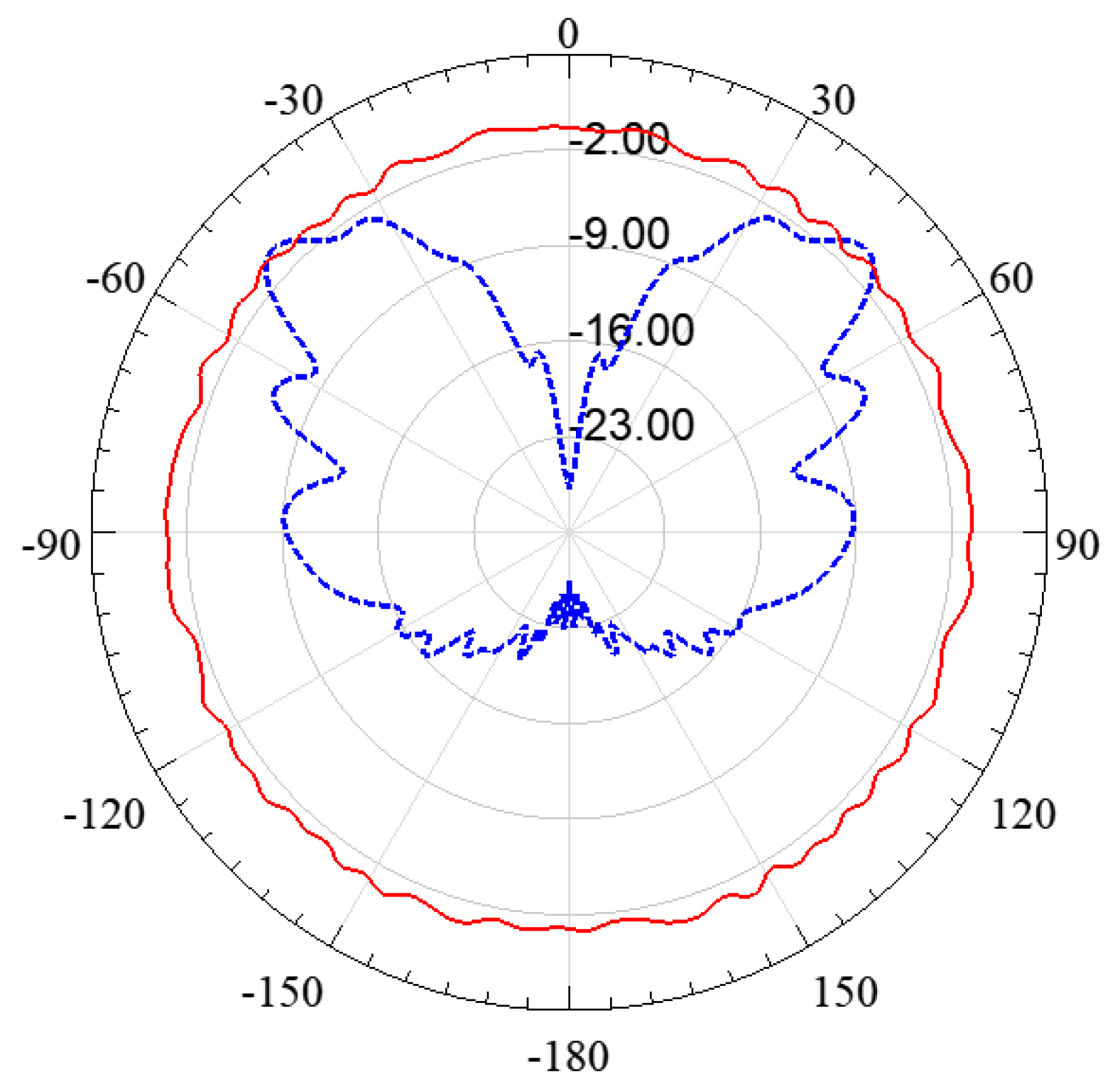
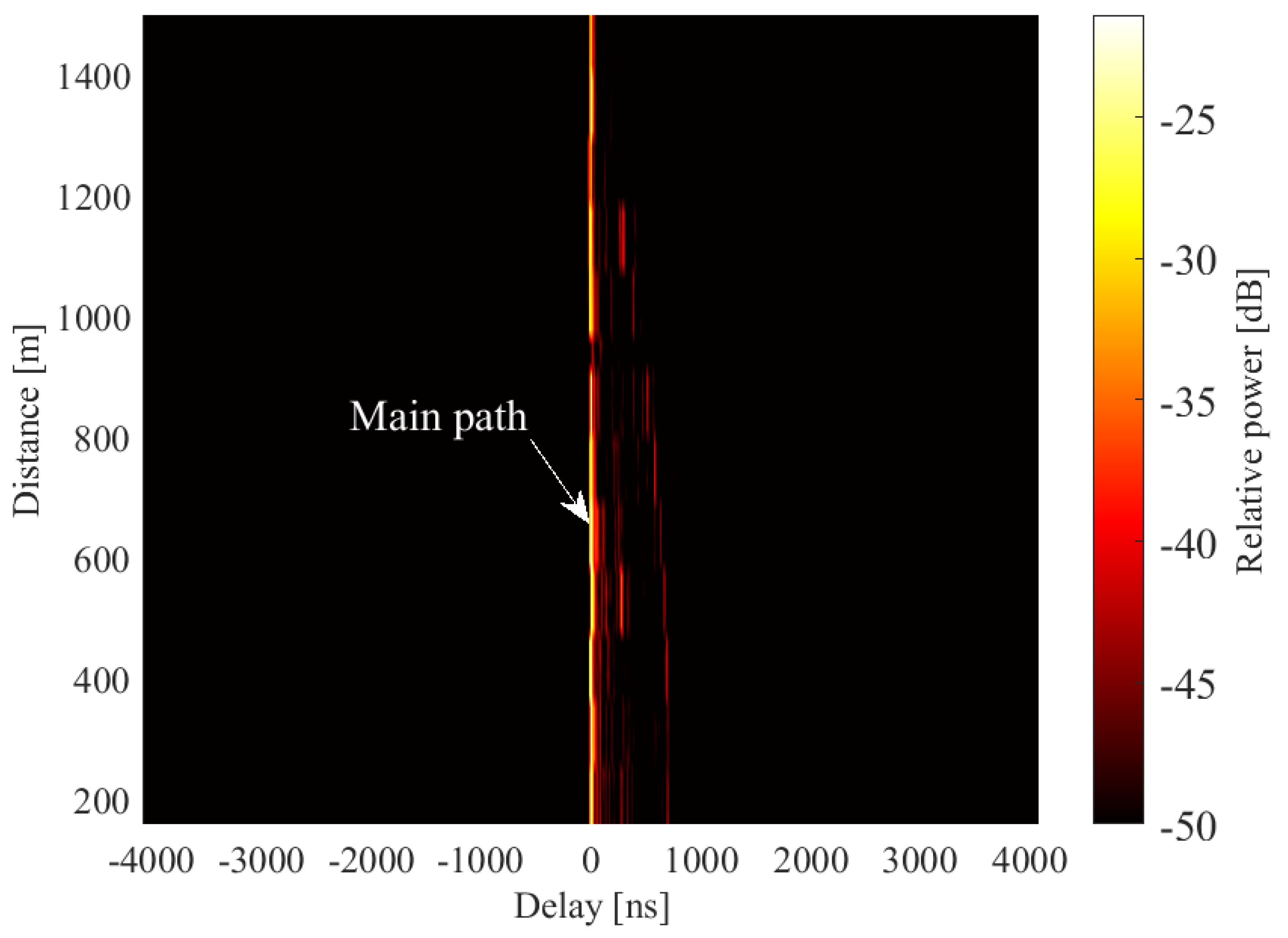

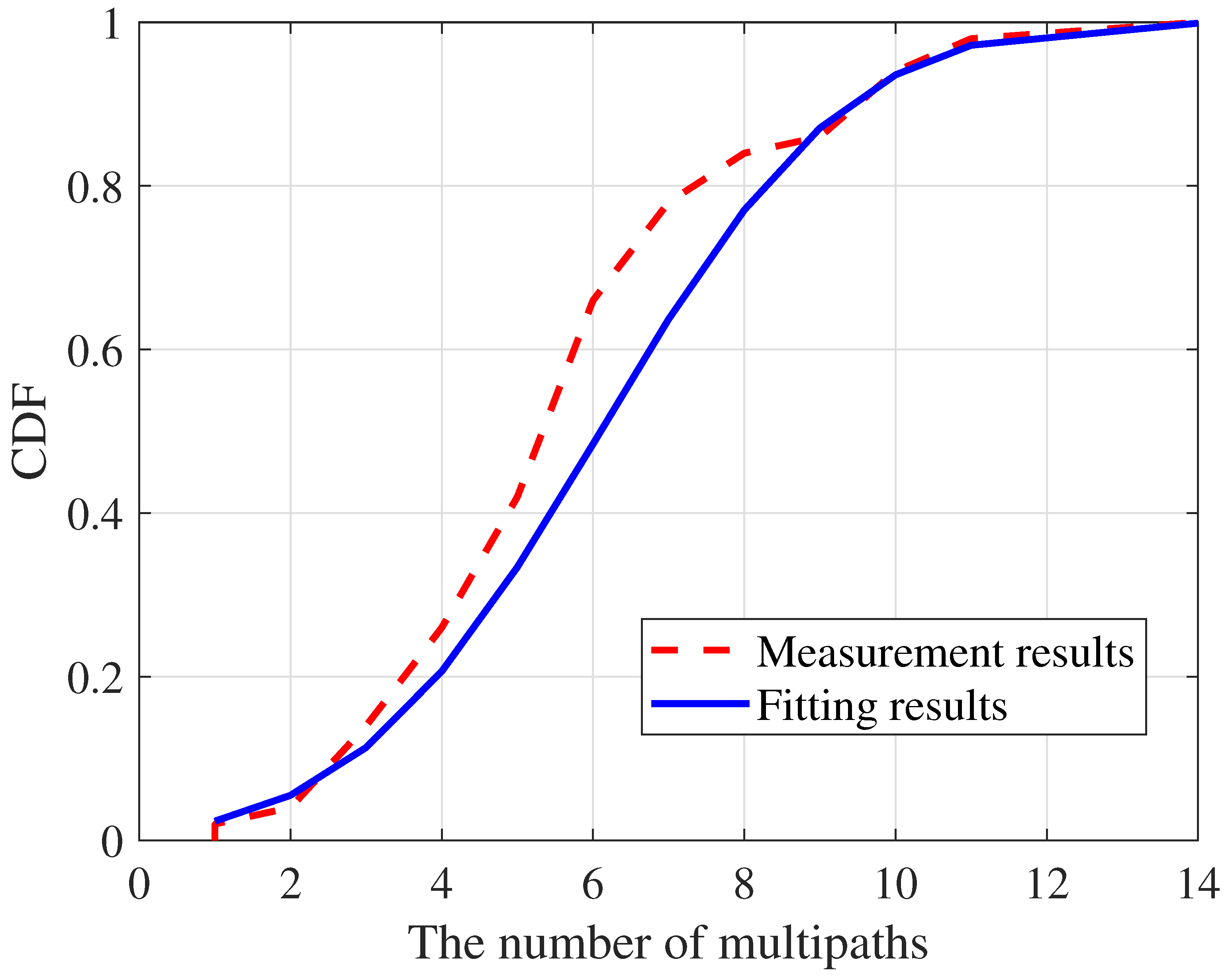

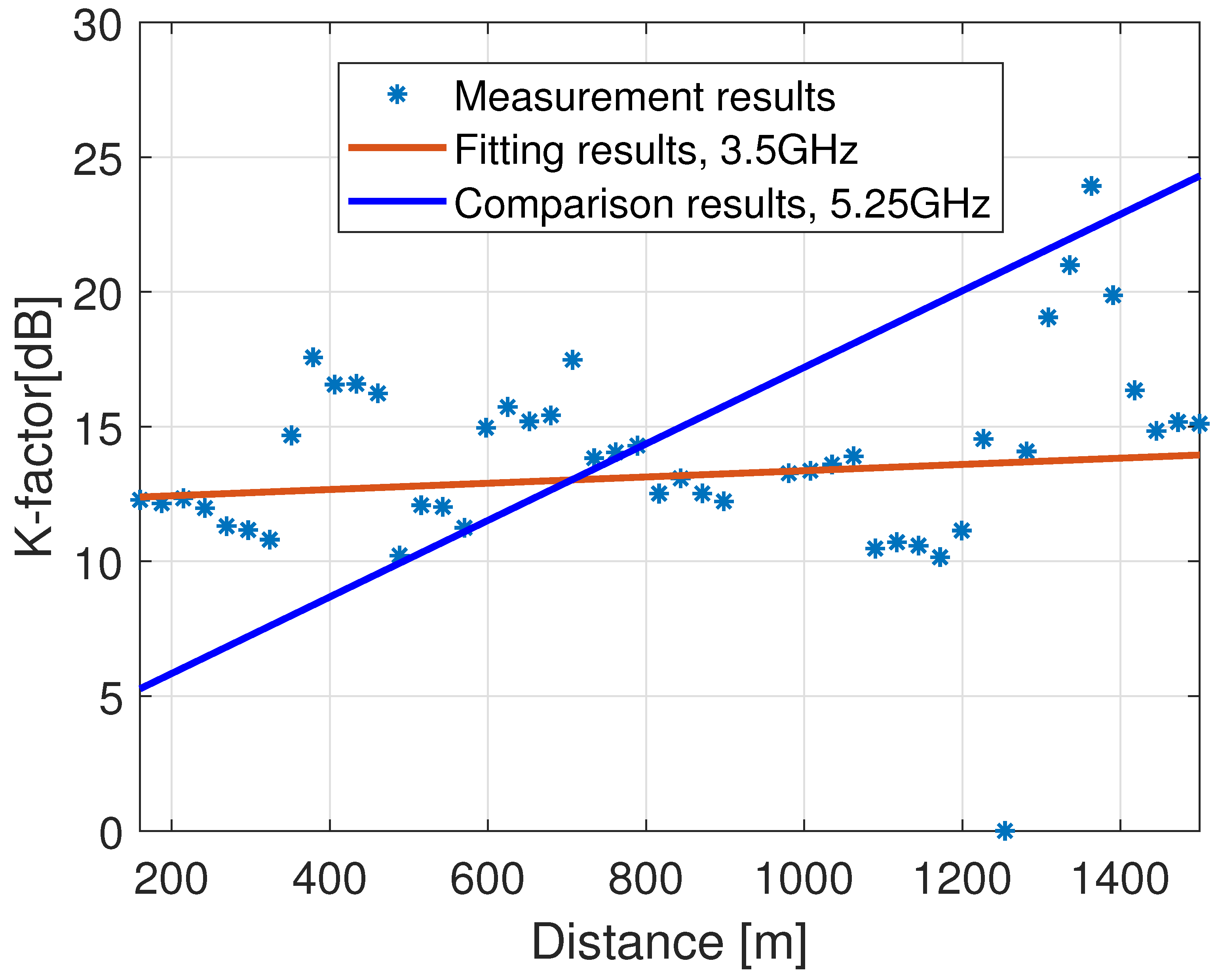

| Signaling Information | Set 1 | Set 2 | Set 3 | Set 4 |
|---|---|---|---|---|
| Center frequency | 3540 MHz | 3540 MHz | 3540 MHz | 3540 MHz |
| Subcarrier spacing | 30 kHz | 30 kHz | 30 kHz | 30 kHz |
| Bandwidth | 100 MHz | 100 MHz | 100 MHz | 100 MHz |
| RB number | 272 | 272 | 272 | 272 |
| Starting RB | 0 | 0 | 0 | 0 |
| Density | 3 | 3 | 3 | 3 |
| The first subcarrier location | 1 | 1 | 1 | 1 |
| Period | 40 | 40 | 40 | 40 |
| Offset | 25 | 25 | 26 | 26 |
| The first OFDM symbol location | 4 | 8 | 4 | 8 |
| Measurement Parameters | Value |
|---|---|
| Measurement frequency | 3.5 GHz |
| Bandwidth | 100 MHz |
| Delay resolution | 10 ns |
| Channel sample rate | 50 samples/s |
| Channel sample points | 816 |
| Parameters | Value |
|---|---|
| CDF-10% | 3 |
| CDF-50% | 5 |
| CDF-90% | 9 |
| Fitting distribution | Normal |
| Mean value | 6 |
| Standard deviation | 2.57 |
| Parameters | Value |
|---|---|
| CDF-10% | 50.4 ns |
| CDF-50% | 77.2 ns |
| CDF-90% | 99.8 ns |
| Fitting distribution | Normal |
| Mean value | 77.6 ns |
| Standard deviation | 23.14 ns |
| Parameters | Value |
|---|---|
| CDF-10% | 10.34 dB |
| CDF-50% | 12.94 dB |
| CDF-90% | 16.8 dB |
| Fitting distribution | Normal |
| Mean value | 13.38 dB |
| Standard deviation | 3.31 dB |
Disclaimer/Publisher’s Note: The statements, opinions and data contained in all publications are solely those of the individual author(s) and contributor(s) and not of MDPI and/or the editor(s). MDPI and/or the editor(s) disclaim responsibility for any injury to people or property resulting from any ideas, methods, instructions or products referred to in the content. |
© 2023 by the authors. Licensee MDPI, Basel, Switzerland. This article is an open access article distributed under the terms and conditions of the Creative Commons Attribution (CC BY) license (https://creativecommons.org/licenses/by/4.0/).
Share and Cite
Chen, C.; Fei, D.; Zheng, P.; Ai, B. A Passive Channel Measurement and Analysis Based on a 5G Commercial Network in V2I Communications. Electronics 2023, 12, 3715. https://doi.org/10.3390/electronics12173715
Chen C, Fei D, Zheng P, Ai B. A Passive Channel Measurement and Analysis Based on a 5G Commercial Network in V2I Communications. Electronics. 2023; 12(17):3715. https://doi.org/10.3390/electronics12173715
Chicago/Turabian StyleChen, Chen, Dan Fei, Peng Zheng, and Bo Ai. 2023. "A Passive Channel Measurement and Analysis Based on a 5G Commercial Network in V2I Communications" Electronics 12, no. 17: 3715. https://doi.org/10.3390/electronics12173715
APA StyleChen, C., Fei, D., Zheng, P., & Ai, B. (2023). A Passive Channel Measurement and Analysis Based on a 5G Commercial Network in V2I Communications. Electronics, 12(17), 3715. https://doi.org/10.3390/electronics12173715





